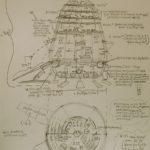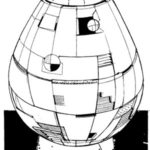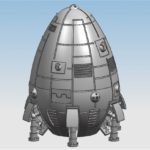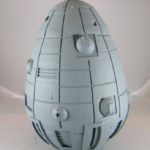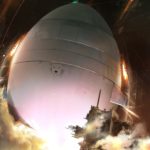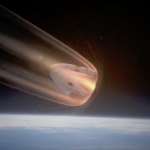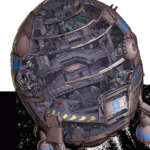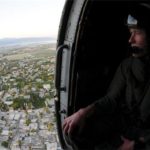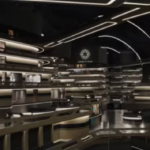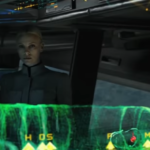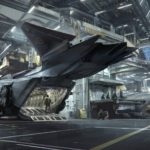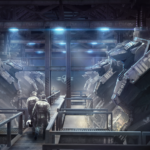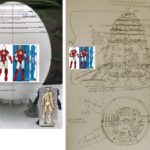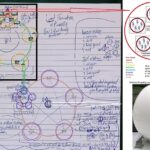* All Inisfreean dropships are now extremely luxurious, their focus being serving as ships which are hardened (armored) interplanetary pleasure palaces.
–
Table of Content:
- Introduction
- Dimensions & Layout
- Vertical Layout & Primary Inventory Items
- Total Complement
- Appearance Modes
- Special Features
- Time to Construct
- History
- Designs (Images Begin)
- Exterior Concepts
- Overall Appearance like the Dragon-1
- Interior Concepts
- Comparisons/Decks
- Standard Deployment Formation of Its Transported Items
–
Introduction:
Inisfreean DropShips are egg-shaped* Spacecraft designed to carry entire armies to and from any battlefield, predominantly along short flights from Inisfreean WarShips or ColonyPods to planet-side locations.
This type of Inisfreean construct will be deployed whenever there is warfare on the state or lake (Great Lakes size) level. They are capable of much longer ‘jumps’ (flights) for emergencies, though.
..
2024 September 12 Thursday clarification: Since these vessels are not spheres, just spherical/spheroid, we call them “egg-formed” (or, as incorrect Outlanders colloquially say, “egg-shaped”). They are not “shaped” (formed) like a typical chicken egg (ellipsoid/elongated), but the opposite way; they are wider than they are tall (thus oblate). Like many non-chicken types of eggs, they are nearly spheres.
–
Dimensions & Layout:
- Diameter: 20pxl* (as viewed in this website’s city maps) wide (at the lowest hangar level) = 1,320′ (20×66)
- Height: 19pxl* tall = 1,254′ (19×66)
- Floorspace: 1,370,000 sqft. (for the widest levels)
- Stories: ~70 (excluding the tallest levels used for the IC BMs) (1,254′-528′ = 726′ of vertical space for levels)
- Upper Levels: ~20 (excluding the tallest levels used for the IC BMs, and the 120′-tall level for the landing gear) (assuming some levels are 2-3 stories; 20′-30′ for the WRs and MPHAs, etc.)
- Total Floorspace: ~27,400,000 sqft. (1,370,000 x 20 levels)
- Personnel: *750,000 IC MFs
- Dispersion: ~1 IC MF per 36 sqft.; ~1 IC MF per 6’x6′ area (27,400,000 sqft. / 750,000 IC MFs) if evenly dispersed
- Overall Layout: radial; 5 subdivisions/hangars per level, all arranged evenly around a central AIOW
*If just counting the map or cross-section DS image inside its/the black outline, a DS is (pxl) 18w × 19h.
With (including the) black outline is 20w × 21h.
The only way a DS is wider than tall is if using the combination of the top-down outline (including the black border/line) but Not the sideview (black border) outline; only then is a DS 20w × 19h (thus ~66′ wider than tall).
–
Vertical Layout & Primary Inventory Items:
- Top level: cockpit (5 IC MFs, each on ‘living thrones’ made of 3D Celtic-style ‘weaves’ of 10 IC MFs each; ~55 IC MFs total in these cockpits)
- Higher section: FJs (8,000 IC MFs inside 4,000 IC FJs; 2 in each FJ)
- High section: MPHAs (52,000 IC MFs inside 1,000 IC MPHAs; 52 in each MPHA)
- Middle section: STs not assigned to a vehicle (1,953,125 IC MFs; 5 of our divisions; 25 of our brigades; 125 of our regiments; 625 of our battalions, etc.)
- Low section: TKs (120,000 IC MFs inside 20,000 IC TKs; 6 in each TK)
- Lower section: WRs (180,000 IC MFs inside 10,000 IC WRs; 18 in each WR)
- Lowest hangars: BMs (965 IC MFs inside 5 IC BMs; 193 in each BMs)
- Bottom section: landing gear, etc.
55 + 8,000 + 52,000 + 1,953,125 + 120,000 + 180,000 + 965 = 2,314,145 ICVs in each DS
–
Total Complement: 2,314,145 troops; 625 battalions, 20,000 tanks (TKs), 10,000 APCs (WRs), 4,000 fighter-jets (FJs), 1,000 cargo aircraft (MPHAs), and 5 BattleMechs (BMs)
So each IC DS has almost as many personnel as the United States’ Army, Navy, and Air Force combined during 2012, or nearly 4 times the total number of U.S. Marines during that year. Thus, when an Inisfreean DropShip lands, it is like deploying the entire armed forces of a superpower nation (except that each of our individual members is more powerful than a Kryptonian, thus any of them could singlehandedly take out an entire human army/superpower).
–
Appearance Modes:
Like all ST and AP suits, Inisfreean DSs have the following appearance and cloaking options:
- Basic / Nude (matte white)
- Cloaked (transparent, showing Outer Space straight through it)
- Masked (disguised as an asteroid or comet)
- Nova (flashing with the brightness of a star in order to surprise, disorient, or even blind nearby enemies, or remaining as bright as a normal star)
–
Special Features:
* Tonnage & composition are classified.
Far more advanced than a human dropship, Inisfreean dropships incorporate cloaking, teleportation, fly-by-mind interfaces, quantum filter wall-hatches, smart-skin, and even warp-surfing. Due to the small size of Inisfreeans, as well as how brilliantly they pack themselves and their gear and vehicles, Inisfreean Spacecraft can carry many whole-number multiples the maximum capacities of most Outlander vessels of comparable classes, dimensions, and natures.
* All Inisfreean Spaceships at and above the DropShip size have the following luxury features in them:
- anchored plant pots and landscaping with containment ‘energy-hoops’ (similar concept to a hoop-house crop-row covering, but invisible and only active during rapid maneuvers)
- anchored red carpets
- banners (long, hanging, with the Inisfree sigil centered on them)
- fluted columns framing hatches (doors)
- framed paintings (digital) and hologram projectors
- furs (artificial)
- marble fountains
- jacuzzis
- sconces
- throws (bed decorations)
- velvet ropes (such as are seen in VIP drop-off walk-ways and related areas)
- waterfalls
–
Time to Construct:
It takes ~3 weeks to 3D-print one of these ships. On the Inisfreean 13-month calendar, that’s 21 days. That means that every day… another ~4.7% of an Inisfreean DropShip gets completed.
- ~3.5 days; days 1 through 4: “bones”; frame/skeleton
- ~3.5 days; days 4 through 7: “tendons”; secondary conduits/pipes, etc. (as the frame/skeleton is based on the Grid Mind mesh/tentacles; the frame of every Inisfreean vessel/construct doubles as its plumbing and electrical wiring)
- ~3.5 days; days 8 through 11: “muscles”; hatches, VTOL shafts, etc.
- ~3.5 days; days 11 through 14: “organs”; repulsines, Vril reactor/batteries, etc.
- ~3.5 days; days 14 through 17: vehicles/craft; its aerospacecraft, land vehicles, etc. (except for its BMs, as each of them also takes a few weeks (closer to 2 weeks) to 3D-print; they are started sooner)
- ~3.5 days; days 17 through 21: personnel; Inisfreeans (ICVs) stationed in its stasis tubes
–
History:
The first Inisfreean DropShips were completed in July of 2011; they were inside the first Inisfreean ColonyPods ever made.
–
Designs:
–

–
Exterior Concepts:
–
Overall Appearance like the Dragon-1:
Just not as small or tall; our DSs are not taller than they are wide.
–
Interior Concepts:
–
Comparisons / Decks:
–
Standard Deployment Formation of Its Transported Items:
This 5-formation’s parts along the 360° are: 72° apart.
- 0/360°/north,
- 72° (~NE/ENE),
- 144° (~SE/SSE),
- 216° (~SW/SSW),
- 288° (~NW/WNW).
Naturally, their placement is somewhat based on the topography surrounding the given DS landing-spot; the 5 main groups of forces that drive/fly/march out of the DS won’t always be centered at those exact degrees relative the DS.
–
2024 August 24 Saturday: These next 2 images show an accurate update to the previously only-estimated necessary minimum land-area for deploying all forces 1 of these DS can transport/house.
The original estimate was that a 12.43×12.43 miles (154.41 sq.miles) land area would be needed for such a full deployment,
but today we determined that only a 6.5×6.5 (42.25 sq.miles) area would be needed for a normal-dispersion formation,
and even less (5.5×5.5; 30.25 sq.miles) for a compact formation.

–

–
- Ideal-formation allows for neighborhoods and small towns to be encircled, and for battalions to move in circle-formation; there is room for 1 of our battalions to stay in its circular/pentagon formation while on the move as an entire unit between adjacent/other units in such a deployment around a DS landing-site.
vs.
Compact-formation does not allow those things; only (military-unit) Companies can move in circle-formation in that smaller dispersion, and only individual houses or buildings can be encircled. - All ICVs and their vehicles/aircraft can instantly deploy into that 5-circles formation-of-formations;
they can portal out to preset coordinates ensuring perfect/planned dispersion. - Alternatively, they can file out from all levels simultaneously;
every level of the dropship has 5 sections, and each section has 1 aircraft/vehicles hatch for exiting,
so multiple the number of hangar-levels by 5 for how many exit hatches there are,
and that number is the same as how many aircraft/vehicles can simultaneously exit one of these dropships. - 4 FJ levels x 5 exit hatches = 20 exit hatches for FJs; 20 FJs can exit at the same time
20 MPHA levels x 5 exit hatches = 100 exit hatches for MPHAs
5 TK levels x 5 exit hatches = 25 exit hatches for TKs
10 WR levels x 5 exit hatches = 50 exit hatches for WRs
(but those numbers of levels are based on the egg-shaped outline, perhaps not the actual/exact DS height) - For a full deployment right after landing, there’s no reason all hatches couldn’t be used for exiting,
so double those numbers;
40 FJs exiting at the same time,
200 MPHAs
50 TKs
100 WRs - Let’s allot 5 seconds for each exiting;
4,000 FJs x 5s = 20,000s… /40hatches= 500 seconds to deploy all FJs at the rate of 5sec/FJ
1,000 MPHAs x 5s = 5,000s… /200hatches= 25 seconds
20,000 TKs x 5s = 100,000s… /50hatches= 2,000 seconds
10,000 WRs x 5s = 50,000s… /100hatches= 500 seconds
..
Thus it might take up to 34 minutes for the last TKs to get into place.
~Half an hour is not a rapid deployment time, except that there are tens of thousands of vehicles and hundreds of thousands of troops getting into formation in that time, which makes it still amazing. - The draft1 dispersion has the BMs at ~2.5 miles from the edge/hull of the DS.
The innermost troops are ~half that distance away from that edge/hull; ~1.25 miles.
This dispersion allows for closer Divisions and (within Divisions) Brigades,
so those distances could be reduced by perhaps .5-.75 of a mile. - The pentagon formations show how their corners can be nearly touching,
or, to reduce dispersion, 2 non-adjacent pentagons can be turned so that one of their points is inward.
This can be done on all levels; fire-teams up to Divisions. - The ~square mile of unused space between each Division’s 5 Brigades could be to protectively surround a suburb or satellite-town,
and the multiple square miles of unused space between the 5 Divisions and the DS could be to protectively surround a large/central town or small city.
Non-immortal evacuees would be kept safe inside the WRs and MPHAs as they were moved into the DS.
Portal-ing them there is possible, of course, but when hundreds of thousands to millions at one LZ/area need to be moved, even though ICVs (and all ICs) are perfectly coordinated with one another, driving and/or flying them reduces the potential for collisions/surprises. - There’s almost no need to ever deploy this many ICVs, vehicles, and aircraft on one world,
unless the simultaneous evacuation/protection of the same number of non-immortal good Outlanders is needed in short time;
in cases where an entire city of hundreds of thousands is suddenly on the brink of annihilation, that is when the entire DS complement might deploy at the same time. - Since the 5-duty daily rotation is usu. based on the squad,
larger units do not change their physical position when “standing up” or “standing down” for any of those 5 types of duty;
when it comes time for one squad to rest, for example, only that squad moves into the most-protected position in the platoon’s area/location.
This way, every platoon camped on the ground outside the DS, and every larger unit, can maintain/hold its overall area/position.
–
Also see:
–


